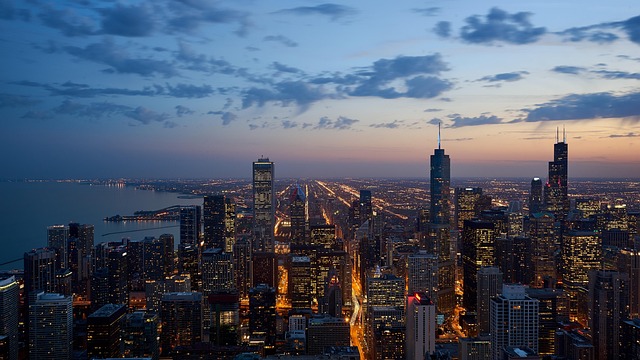In Karachi, understanding and tracking the Air Quality Index (AQI) is crucial for tackling air pollution. The AQI, ranging from 0 to 500, helps residents identify clean versus polluted air days. Key pollutants include PM2.5, PM10, NO2, SO2, and O3. Real-time data availability allows citizens to take precautions during peak pollution times. Korangi, a vibrant Karachi neighborhood, faces unique challenges due to its coastal location, high density, and weather patterns that trap pollutants. Improving air quality in Korangi requires combined efforts from the government (enforcing emission standards, promoting public transport) and individuals (adopting energy-efficient practices, using electric vehicles).
Karachi’s Korangi district faces persistent air quality challenges, impacting residents’ health and well-being. This article delves into the intricate web of factors contributing to poor air quality, from industrial emissions to vehicular congestion. We explore the Air Quality Index (AQI) as a vital tool for understanding and monitoring pollution levels in Karachi. Additionally, we present actionable solutions and ongoing efforts to mitigate these issues, offering a comprehensive strategy for improving Korangi’s air quality and fostering a healthier urban environment.
Understanding the Air Quality Index in Karachi

In Karachi, understanding the Air Quality Index (AQI) is crucial for gauging and mitigating air pollution levels. The AQI is a standardized scale that measures the concentration of various pollutants in the air, providing a single numerical value indicating overall air quality. This index ranges from 0 to 500, with lower numbers representing cleaner air and higher numbers signaling more severe pollution levels. Key pollutants considered in calculating the AQI include particulate matter (PM2.5 and PM10), nitrogen dioxide (NO2), sulfur dioxide (SO2), and ozone (O3).
Karachi residents can access real-time AQI data from various sources, including government agencies and independent environmental monitoring groups. This information empowers them to take proactive measures when air quality deteriorates, such as wearing masks, avoiding outdoor activities during peak pollution times, and staying informed about any health advisories. By being aware of the AQI, Karachi’s citizens can collectively contribute to improving air quality through sustainable practices and advocating for policies that address environmental concerns specific to this vibrant city.
Factors Affecting Air Quality in Korangi, Karachi

The air quality in Korangi, a vibrant area of Karachi, is influenced by a multitude of factors that contribute to its current state and trends. One primary consideration is the city’s geographical location; being close to the coast means Korangi is susceptible to coastal emissions and sea breezes, which can impact overall air composition. Additionally, the dense population density of Karachi itself plays a significant role; high population centers like Korangi face challenges from vehicle exhausts, industrial emissions, and construction activities all within close proximity.
Weather patterns are another critical element. During certain seasons or under specific meteorological conditions, Karachi experiences reduced wind speeds, leading to stagnant air masses that trap pollutants. Conversely, intense heat waves can exacerbate the dispersion of pollutants, posing unique threats to public health. Moreover, nearby industrial areas contribute significantly to particulate matter and gas emissions, which, when combined with natural factors, shape Korangi’s air quality landscape in Karachi.
Efforts and Solutions for Improving Air Quality in Korangi, Karachi

In Karachi, particularly in areas like Korangi, improving air quality is a collective effort that involves both governmental initiatives and individual responsibilities. The city’s diverse industries and increasing traffic congestion contribute significantly to air pollution. To combat this, the government has initiated several projects. These include implementing stricter emission standards for vehicles and industrial units, promoting public transport to reduce road congestion, and establishing green spaces and plants to absorb pollutants.
Additionally, communities in Korangi play a crucial role in these efforts by adopting sustainable practices at home, such as using energy-efficient appliances, opting for walkable or bike-friendly routes, and participating in community clean-up drives. Encouraging the use of electric vehicles and promoting eco-friendly alternatives to plastic can further enhance air quality. These combined strategies have the potential to make Korangi a healthier and more livable place for its residents, demonstrating the positive impact that collaborative action can have on the environment in a bustling metropolis like Karachi.
The air quality of Karachi, particularly in Korangi, is a complex issue influenced by various local and regional factors. By understanding the Air Quality Index (AQI) and its impact, we can recognize the urgency to address these challenges. The article has highlighted critical factors degrading Korangi’s air, offering insights into potential solutions. It is imperative for the community, authorities, and policymakers in Karachi to collaborate on implementing sustainable strategies, ensuring a cleaner and healthier environment for future generations. This includes focusing on industrial regulations, traffic management, green initiatives, and public awareness campaigns to reduce pollution levels and improve overall air quality.
